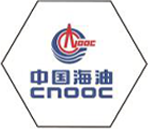
Nov . 19, 2024 21:26
Back to list
pressure reducing regulators
Understanding Pressure Reducing Regulators Key Components and Importance
Pressure reducing regulators (PRRs) play a crucial role in various industrial and domestic applications, ensuring the safe and efficient operation of systems that utilize gases and liquids. These essential devices maintain consistent outlet pressure, regardless of fluctuations in inlet pressure, thereby protecting downstream equipment from damage and ensuring operational integrity.
At its core, a pressure reducing regulator is designed to lower the pressure of a fluid, usually gas or liquid, from a higher pressure source to a desired lower pressure level. The primary function is to regulate the pressure to a value that is safe and appropriate for equipment operation. PRRs are commonly used in industries such as natural gas, water utility, pharmaceuticals, and in applications requiring controlled gas delivery systems.
How Pressure Reducing Regulators Work
A typical pressure reducing regulator consists of a series of components, including a diaphragm, spring, adjusting screw, and ports for inlet and outlet connections. When high-pressure fluid enters the regulator, it exerts a force on the diaphragm, which is connected to the spring. This force causes the diaphragm to move against the tension of the spring, allowing some fluid to pass through while restricting the flow to maintain the outlet pressure at the set level.
As the downstream demand fluctuates or if there’s any change in the inlet pressure, the diaphragm adjusts accordingly, either compressing or decompressing the spring to maintain a consistent pressure at the outlet. The adjusting screw can be manipulated to set the desired outlet pressure, enabling operators to customize the regulator’s performance to suit specific applications.
Applications of Pressure Reducing Regulators
PRRs are integral to a wide range of applications. In the natural gas industry, for example, pressure reducing regulators are used to ensure that the gas delivered to homes and businesses is at a safe and manageable pressure. This prevents potential hazards associated with high-pressure gas leaks, which can lead to explosions or fire hazards.
pressure reducing regulators

In water utilities, PRRs help maintain consistent water pressures in municipal supply systems. This is crucial for providing reliable service to customers and preventing pipe ruptures due to excessive pressure. Additionally, in the field of pharmaceuticals, precise control of gas pressures is vital for maintaining the integrity of chemical processes and ensuring safety in production.
Importance of Pressure Reducing Regulators
The importance of pressure reducing regulators cannot be overstated. Firstly, they enhance safety by mitigating the risks associated with high-pressure systems. By ensuring that equipment operates within safe pressure limits, PRRs help prevent potentially catastrophic failures.
Secondly, they improve efficiency by minimizing pressure drop variations, thereby optimizing system performance. Consistent outlet pressure means that downstream equipment operates under ideal conditions, prolonging their lifespan and reducing maintenance costs.
Lastly, PRRs contribute to energy savings. By controlling the pressure supplied to systems more accurately, operators can avoid unnecessary losses and achieve better energy management.
Conclusion
In conclusion, pressure reducing regulators are vital components in many industries, offering essential functions that promote safety, efficiency, and cost-effectiveness. Understanding how these devices work and their applications is crucial for anyone involved in managing systems that utilize gases and liquids. As industries continue to evolve, the importance of these regulators will only grow, making them indispensable in maintaining the integrity of various operations. Incorporating advanced technologies and improved materials in the design of PRRs will likely enhance their performance and reliability in the future, further solidifying their role in modern industrial applications.
Next:
Latest news
-
Safety Valve Spring-Loaded Design Overpressure ProtectionNewsJul.25,2025
-
Precision Voltage Regulator AC5 Accuracy Grade PerformanceNewsJul.25,2025
-
Natural Gas Pressure Regulating Skid Industrial Pipeline ApplicationsNewsJul.25,2025
-
Natural Gas Filter Stainless Steel Mesh Element DesignNewsJul.25,2025
-
Gas Pressure Regulator Valve Direct-Acting Spring-Loaded DesignNewsJul.25,2025
-
Decompression Equipment Multi-Stage Heat Exchange System DesignNewsJul.25,2025

